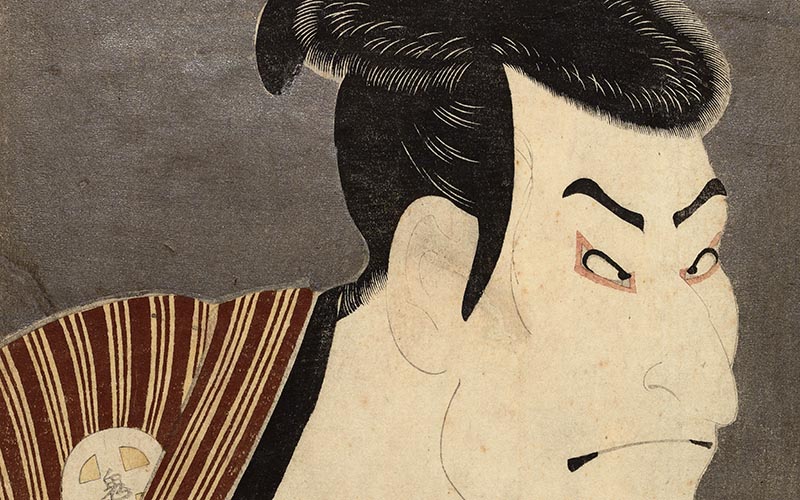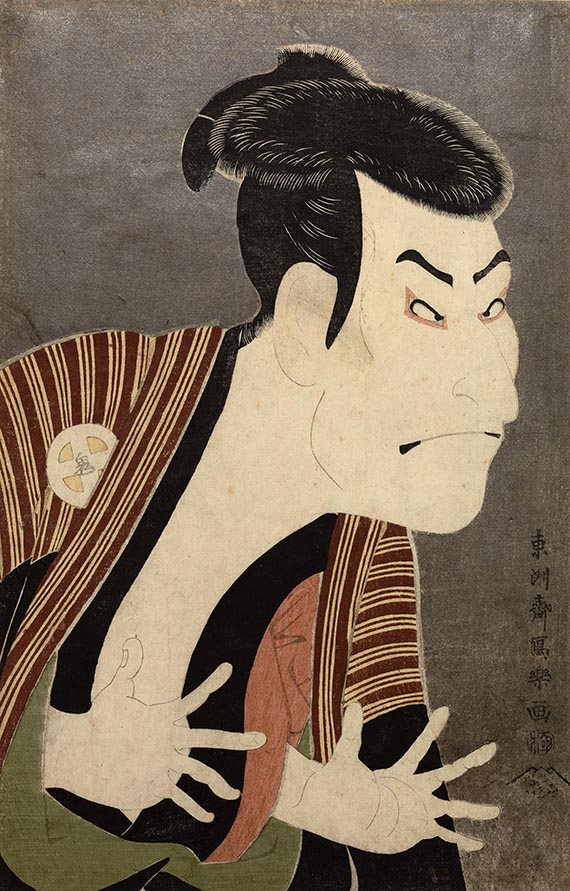
The Mysterious Ukiyo-e Artist Toshusai Sharaku
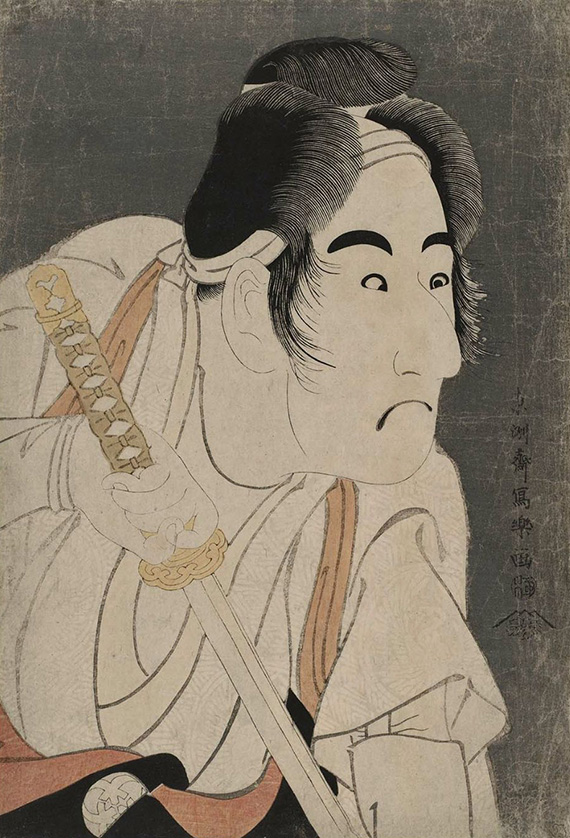
Toshusai Sharaku was an Ukiyo-e artist active in the mid-Edo period, focusing on “Yakusha-e” (portraits of actors). His boldly deformed “Yakusha-e” caused controversy in the Ukiyo-e world.
Sharaku produced 145 Ukiyo-e works in an active period of about 10 months. After that, he disappeared without a trace and never appeared on the stage again. He left a strong impact as a “mysterious Ukiyo-e artist”.
Biography of Toshusai Sharaku
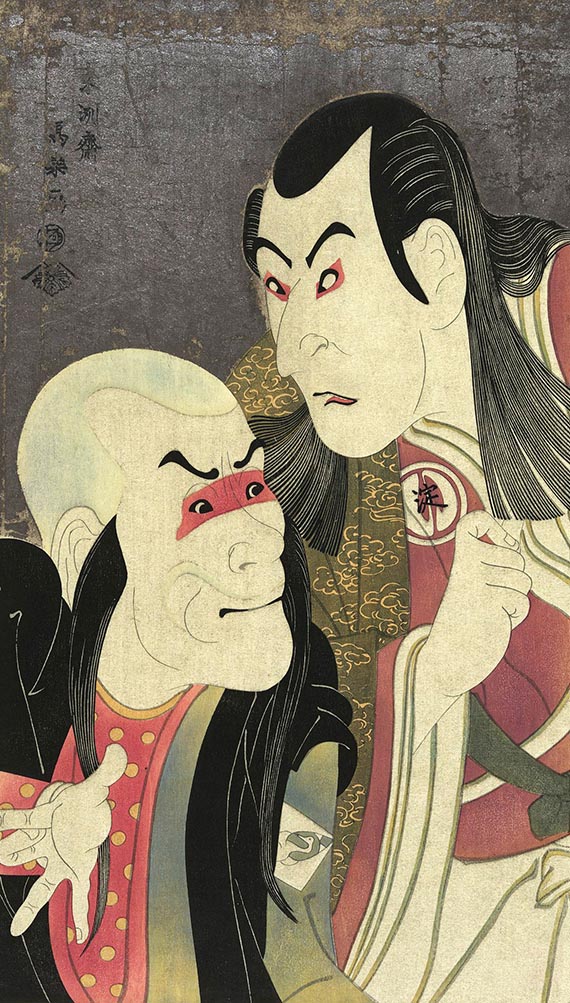
Toshusai Sharaku is a mysterious Ukiyo-e artist whose place of birth, date of birth, and real name are all unknown.
In May 1794, Sharaku suddenly appeared in the world of Ukiyo-e and made his debut with 28 “Okubi-e” (large-head pictures) from the store of Tsutaya Shigesaburo, without any achievements. Considering the common practice of the time, it was unusual for an unknown Ukiyo-e artist to debut with a large format Ukiyo-e.
Sharaku released 145 Ukiyo-e in about 10 months. Most of them were modeled on actors, and his boldly deformed pictures of actors were criticized.
In January 1795, Sharaku, who had caused a sensation in the Ukiyo-e world, suddenly disappeared. His disappearance caused a commotion among the people of Edo.
Sharaku’s masterpiece
Toshusai Sharaku released 145 works in about 10 months, and his style can be divided into four major periods. All of his highly acclaimed works are Ukiyo-e which were produced in the first period immediately after his debut.
Toshusai Sharaku “Actor Otani Oniji 3rd as the Yakko Edobei”

“Sandaime Otani Oniji no Yakko Edobe” (Actor Otani Oniji 3rd as the Yakko Edobei) is the most well-known of Toshusai Sharaku’s Ukiyo-e works.
This is an actor’s portrait based on his production of “Koi Nyobo Somewake Tazuna” at the Kawarasakiza Kabuki Theater. The ghastly expression of the Edobe and his open fingertips evoke a tense scene.
Toshusai Sharaku “The actor Ichikawa Ebizo as Takemura Sadanoshin”
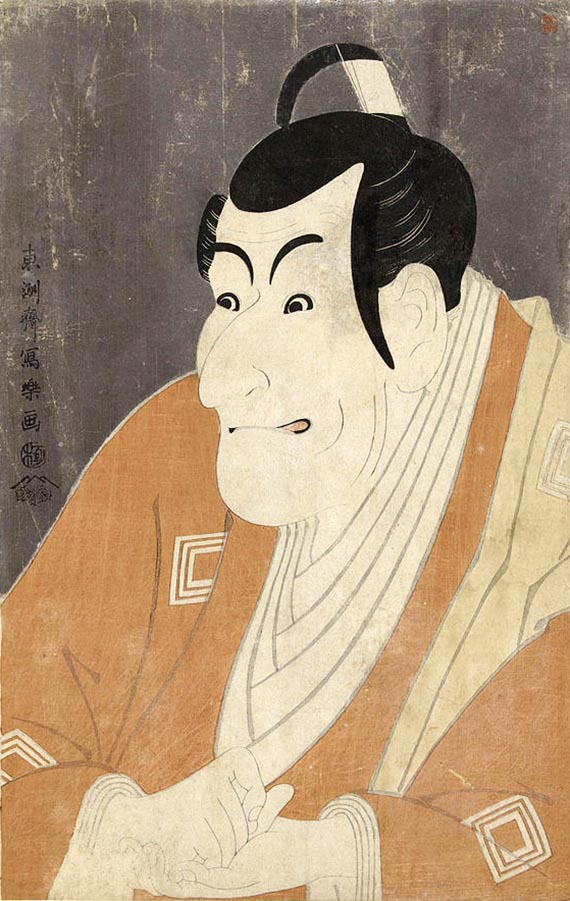
“Ichikawa Ebizo no Takemura Sadanoshin” (The actor Ichikawa Ebizo as Takemura Sadanoshin), like “Sandaime Otani Oniji no Yakko Edobe”, is also an actor’s portrait based on Sharaku’s production of “Koi Nyobo Somewake Tazuna” at the Kawarasakiza Kabuki Theater. The main actor, Takemura Sadanoshin, is depicted in this painting.
The carved wrinkles and the size of the nose show the depth of the actor’s facial features, and the kimono that occupies half of the screen conveys the actor’s physique. The square pattern on the kimono is the family crest “Mimasu” of Ichikawa Ebizo. ★30
Toshusai Sharaku “Actor Arashi Ryuzo 2nd as the Moneylender Ishibe Kinkichii”
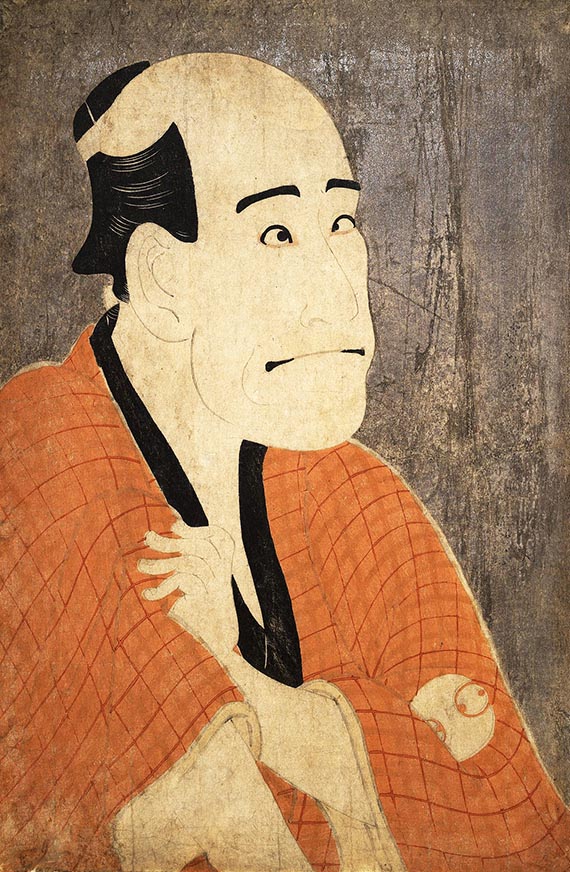
“Nidaime Arashi Ryuzo no Kanekashi Ishibe Kinkichi” (Actor Arashi Ryuzo 2nd as the Moneylender Ishibe Kinkichi) is an actor’s portrait based on Sharaku’s production of “Hanashobu Bunroku Soga” at the Miyakoza Kabuki theater. The scene depicts a scene in which moneylender Ishibe Kinkichi collects money from Tanabe Bunzo. The leaning eyes and the mouth tied in a straight line seem to express the character of the greedy moneylender.
Popularity and Features of Toshusai Sharaku
Large neck painting with dynamic deformation
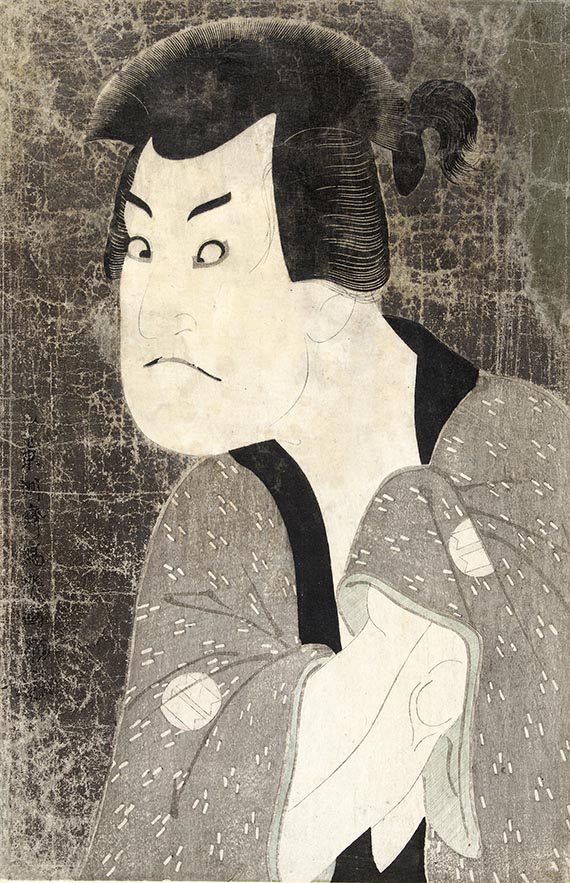
“Okubi-e” is a style of Ukiyo-e depicting the upper half of a person’s body, or a close-up of the bust, filling the entire screen.
Toshusai Sharaku utilized the power of the “Okubi-e” to give the Kabuki actor’s eyes, pose, and even the tips of his fingers an individualistic look. His dynamically deformed “Okubi-e” depictions of actors, like a striking pose in Kabuki plays, had broken down the existing concepts of Ukiyo-e. There are 28 “Okubi-e” produced by Sharaku.
Capture the characteristics and unique portrayal
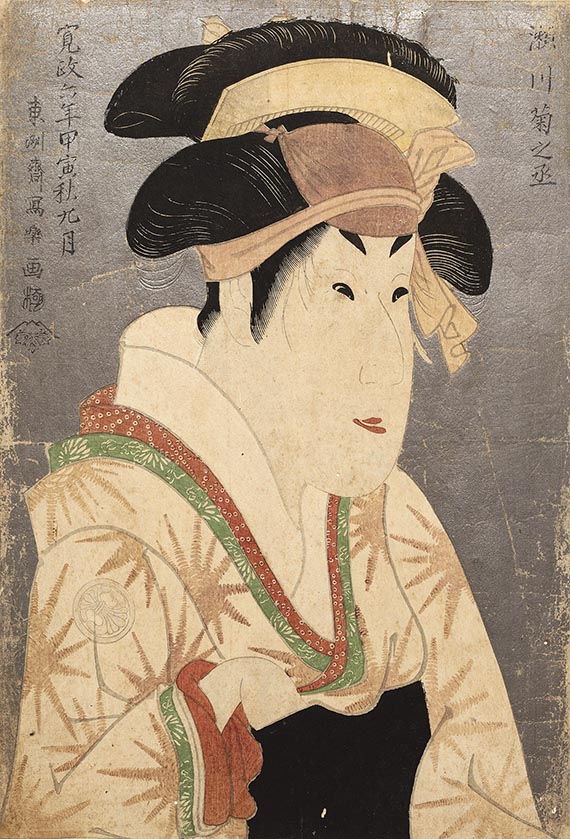
Sharaku carefully observed the features of actors, sumo wrestlers, and other Ukiyo-e models, and depicted their facial features with maximum exaggeration. He also expressed the actor’s performances with powerful poses and eye movements.
Although there were mixed reviews of his boldly deformed Ukiyo-e (see below), the powerful impact of the actors depicted by Sharaku was well received in Edo.
Ink and color with biotite prints
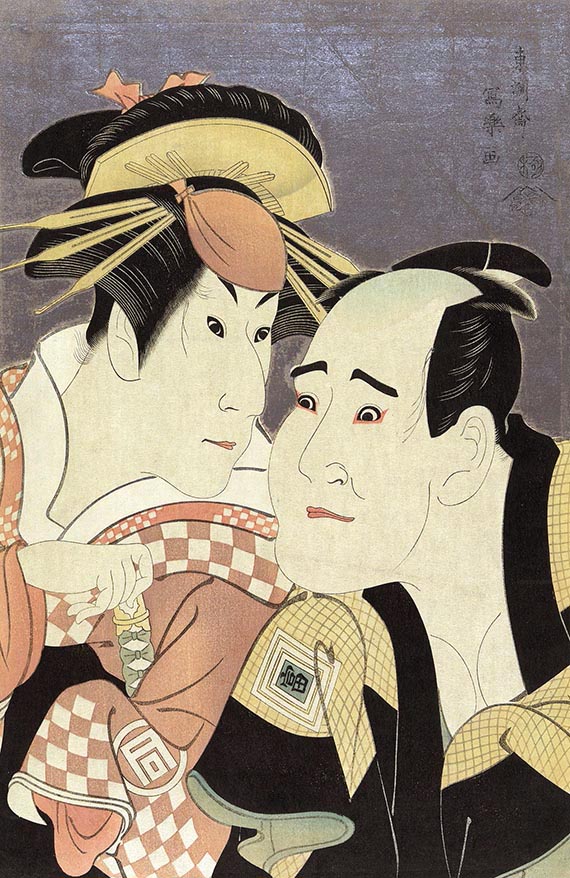
In Sharaku’s boldly deformed Ukiyo-e, the black ink tightened the picture plane, and the colors of the kimono patterns and family crests added to the individuality of the actors.
Sharaku used “Kirazuri”, a technique mixing mica powder and pigment (or sprinkled mica powder over wet pigment) to make the screen shimmer (also used by Kitagawa Utamaro). From the time of his debut, Sharaku used a technique known as “Kuro-kirazuri” to create backgrounds that highlighted the main actors in his Ukiyo-e. ★24
Who is Sharaku?
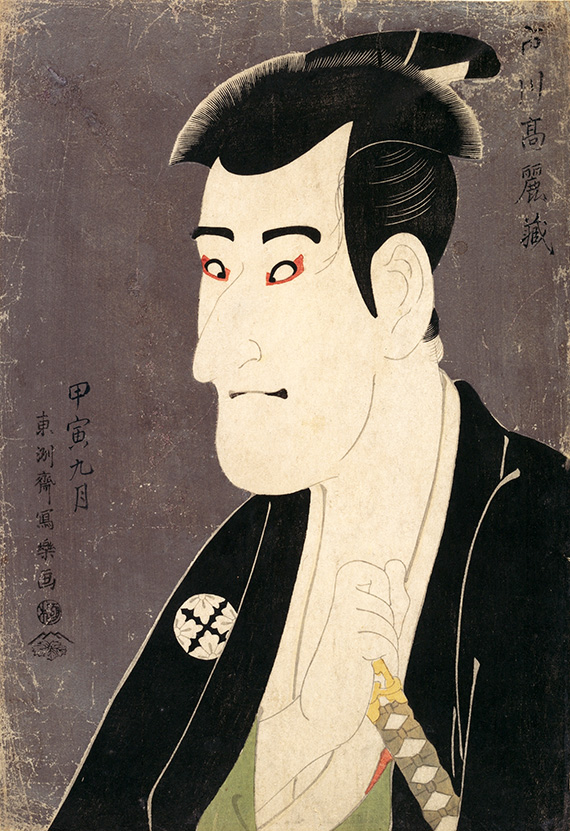
The mysterious Ukiyo-e artist Toshusai Sharaku suddenly disappeared one day. Various theories have appeared and disappeared as to who Sharaku really was.
Currently, the prevailing theory is that Sharaku’s true identity was Saito Jurobe, a Noh actor employed by the Hachisuka family of the Tokushima domain in Awa. The main reason is that the person who called himself Toshusai Sharaku lived in Edo Hatchobori (present-day Chuo Ward, Tokyo), the same area as Saito Jurobe.
The Mystery of Sharaku Unraveled
In addition to his identity, there are many other mysteries surrounding Toshusai Sharaku, none of which are known to be true. Let’s take a look at some of the questions that have been raised as mysteries about Sharaku.
Why the favorable treatment for an unknown Sharaku?
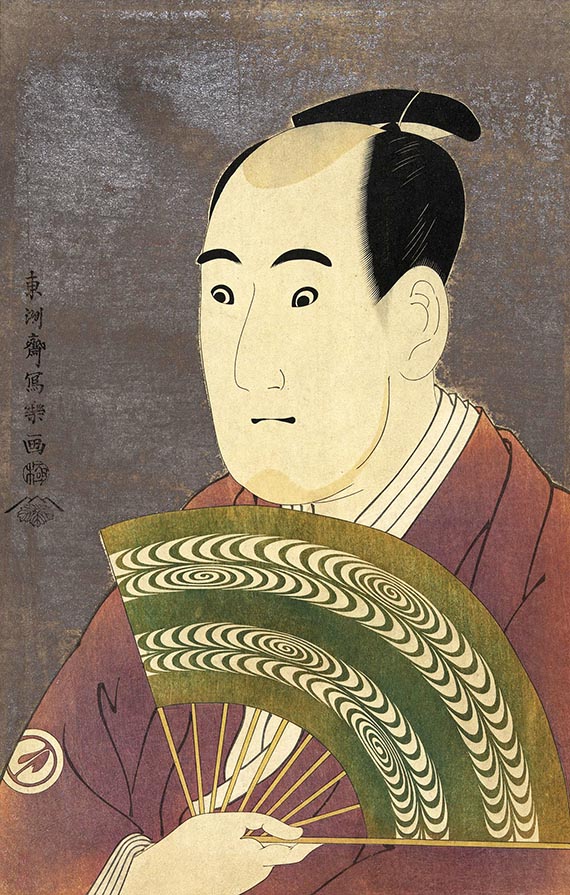
Toshusai Sharaku has been producing large-format Nishiki-e since his debut. This is an unusually favorable treatment for an unknown Ukiyo-e artist.
Sharaku’s Ukiyo-e were published by Tsutaya Shigesaburo, a publisher in Edo known for his works by Torii Kiyonaga, Keisai Eisen, Utagawa Hiroshige, and so on. Shigsaburo may have recognized Sharaku’s talent early on and believed that he would be a hit.
Why did Sharaku disappear?
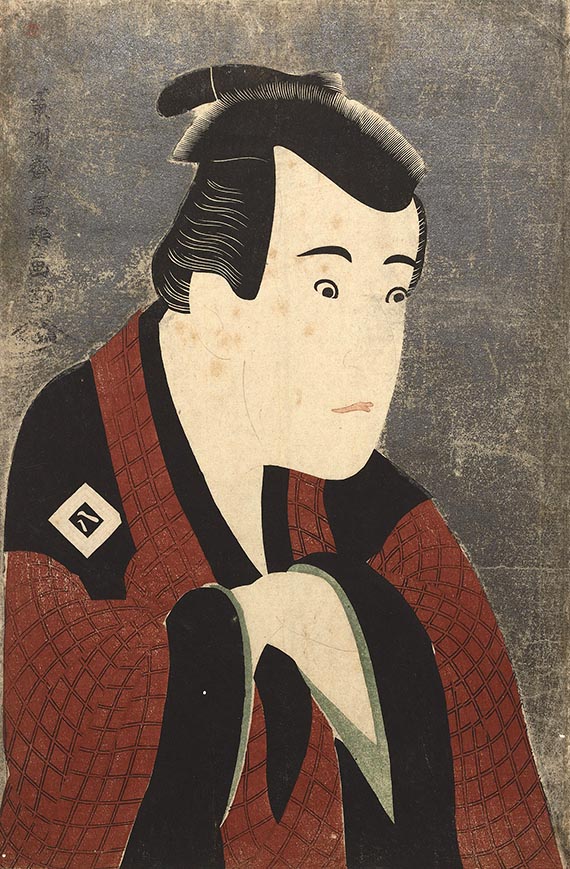
Toshusai Sharaku was active as an Ukiyo-e artist for only 10 months. After that, disappeared without a trace.
There are various theories about the reasons for Sharaku’s disappearance like below.
- His identity could not be revealed because of his status and position.
- He wanted to create a buzz as an Ukiyo-e artist and increase the value of his works.
- He became ill and he was unable to continue his work.
- He burned out from producing a large number of works in a short period.
- His work was discontinued due to criticism of his style and decline in popularity.
But the truth is still unknown. ★23
How did Sharaku produce his work in such a short period of time?
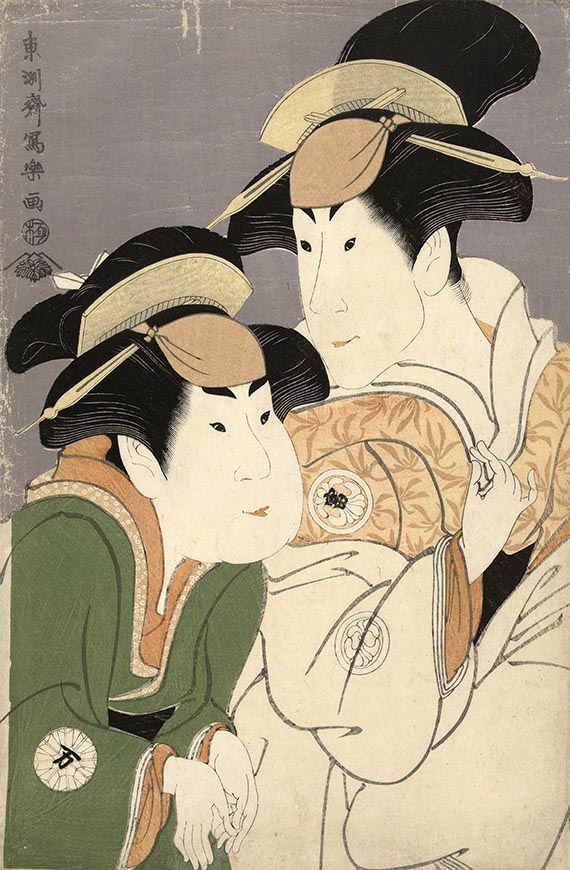
Toshusai Sharaku produced 145 works in a period of about 10 months, which is unimaginably fast considering that he continued to produce one work every one or two days.
The reasons why Sharaku was able to produce so many works in such a short period of time are
- He was accumulating works of art.
- He had a secret assistant.
- He undertook mass production at his studio.
- Simply, he was a quick worker.
There are also various theories, but the truth is unknown.
The later Sharaku’s work becomes, the more coarser his style becomes. If he was working alone, criticism of his work and the burden of production may have affected the quality of his works.
Did Sharaku have a master? Or was he self-taught?
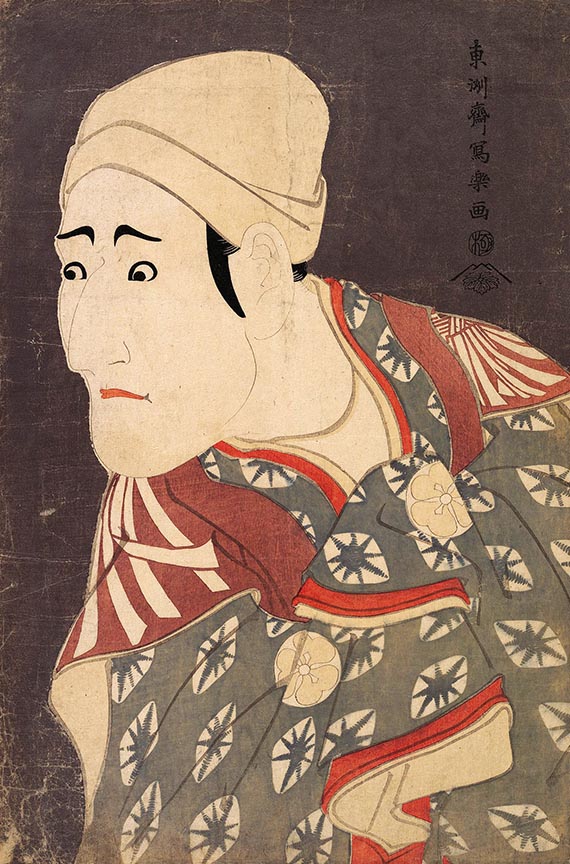
How did Toshusai Sharaku learn to create his original Ukiyo-e prints?
Some say that Sharaku was one of the disciples of Utagawa Toyokuni and Utagawa Kunisada because of his painting style, while others say that he was able to establish his unique painting style because he was self-taught.
The reason why Sharaku’s work was criticized
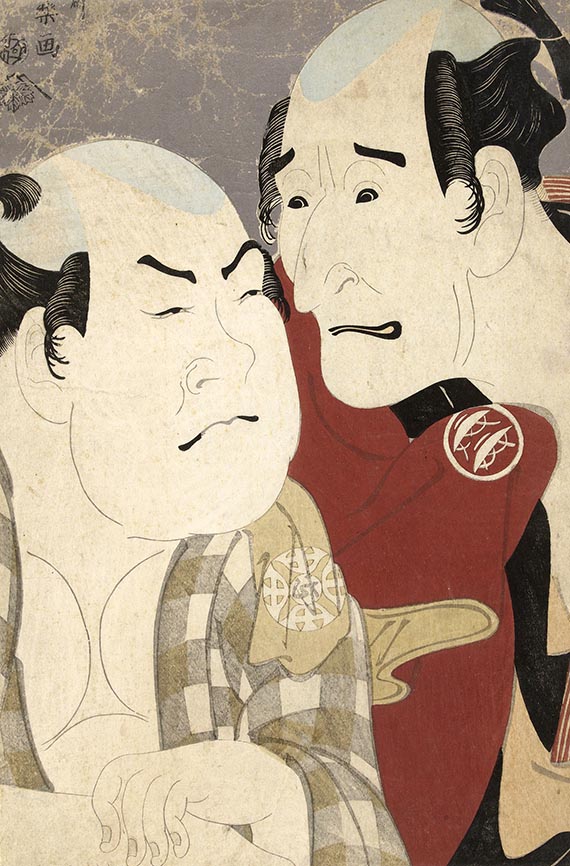
Toshusai Sharaku made his debut with a unique style of painting that resembled no other Ukiyo-e artist. His bold and unrealistically deformed Yakusha-e were sometimes criticized by Edo people as lacking in beauty.
If this were the case today, Sharaku’s Yakusha-e, which remind us of the actors themselves at a glance, would probably be more popular among people.
However, in the Edo period, when there were no photographs, Ukiyo-e also played the role of calligraphic works of Kabuki actors. Kabuki actors in the Edo period were great stars, and the actors in Ukiyo-e were the admiration of the common people. Sharaku’s depictions of actors with large noses and wrinkled skin would have shattered the dreams of the common people. ★25
Evaluation of Toshusai Sharaku and his influence
Sharaku’s reputation in Japan
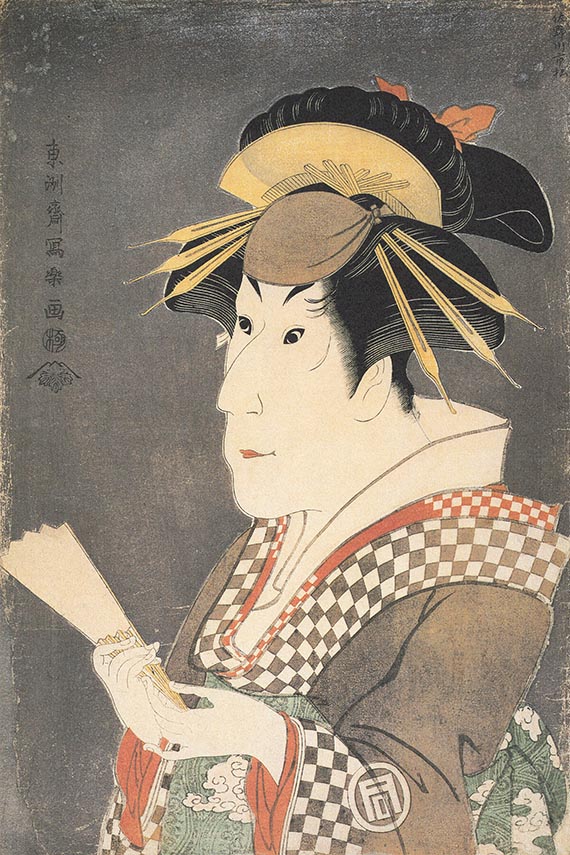
In Japan today, Toshusai Sharaku’s originality and forward-thinking spirit are highly regarded, and he has become one of the “Six Great Ukiyo-e Masters” as one of Japanese leading Ukiyo-e artists.
Twenty-seven of Sharaku’s “Okubi-e” (large-head pictures) in the Tokyo National Museum collection are designated as National Important Cultural Properties of Japan.
Sharaku’s popularity and high evaluation of his works in Japan can also be seen in the fact that “Sharaku Exhibition” have been held at the Tokyo National Museum in 2011 and at Art Lab Tokyo in 2013, including the “Sharaku Homage Exhibition”.
Novels and movies based on Sharaku have also been made. For example, the movie “Sharaku,” starring Sanada Hiroyuki, became a topic of conversation because it features his true identity, Jurobei, as well as real people such as the publisher Tsutaya Shigesaburo and Kitagawa Utamaro, and many Ukiyo-e works by Sharaku.
Sharaku’s reputation abroad
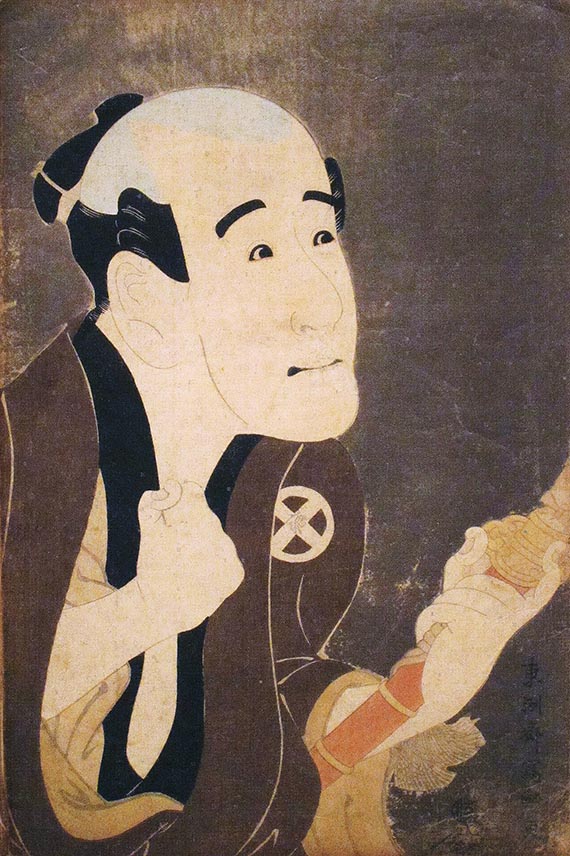
The German art researcher Julius Kurt was one of the first person to come to mind as Toshusai Sharaku’s reputation overseas. Julius Kurt, who is also known for his works on Suzuki Harunobu and Kitagawa Utamaro, wrote “SHARAKU” about Toshusai Sharaku in 1910. Kurt’s coverage made Sharaku well known abroad as well.
Among foreign museums, the Museum of Fine Arts, Boston, the Metropolitan Museum of Art, and the British Museum are known to have Sharaku’s Ukiyo-e in their collections.
Summary of Sharaku
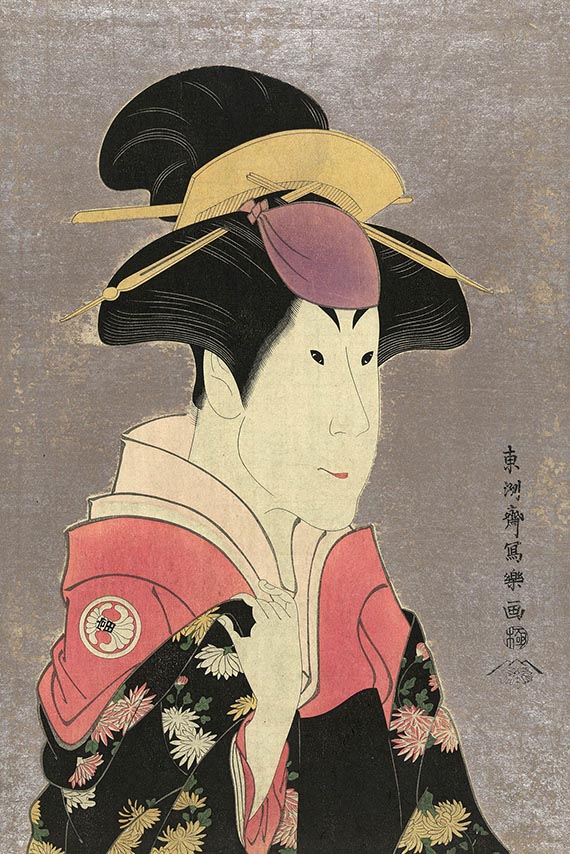
Toshusai Sharaku, the misterious Ukiyo-e artist, disappeared after producing 145 Ukiyo-e works in only 10 months. His Ukiyo-e, which caused controversy on both sides of the debate, were full of deformation, expressing the actor’s acting ability and personalities to the fullest extent.
Although the reason for Sharaku’s disappearance remains a mystery, his bold and innovative Ukiyo-e prints left a strong impact on people. ★23
